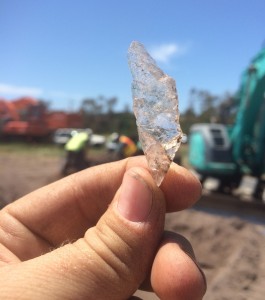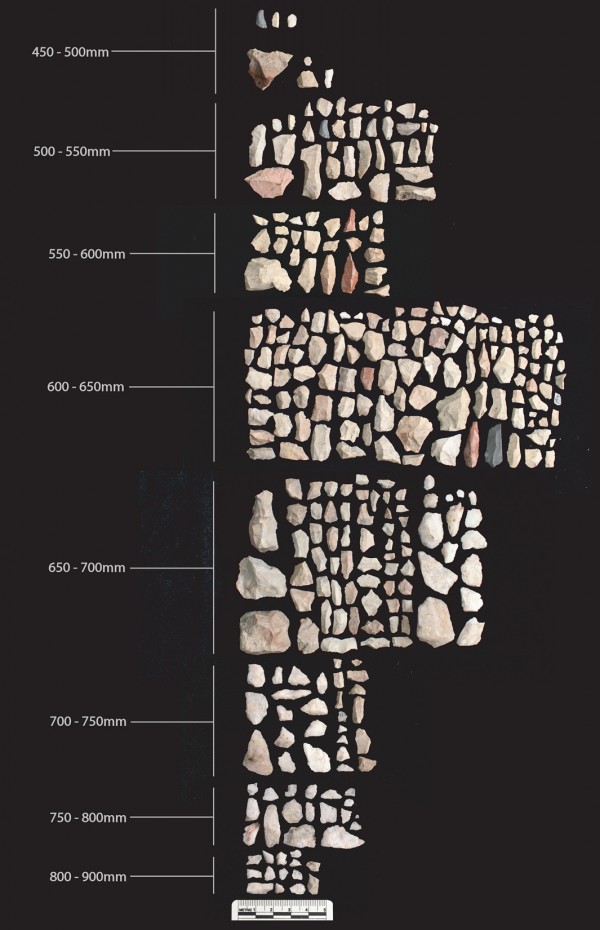Last year, Dr Vincent Clark and Associates completed a large-scale salvage excavation at an Aboriginal site in Lyndhurst, south-east of Melbourne.
More than 100 days were spent in the field, carrying out a systematic mechanical excavation across a defined grid. This week we finished cataloguing the finds, having counted a total of 51,405 stone artefacts weighing more than 114 kg!
The artefacts are from a site spanning a sandy rise that is part of the Cranbourne Sands, along the edges of the former Carrum Swamp. These alluvial sediments can reach a depth of up to 30 metres and were formed during the Early Holocene period. Contained in the sands, to a depth of more than a metre, is a range of cultural deposits that include hearth features, ochre deposits, knapping floors and pits as well as an abundance of stone tools.

A crystal quartz flake that forms part of the Lyndhurst assemblage
Many of the stone artefacts from the site resemble forms typically dating to the Mid-Late Holocene and are characteristic of the ‘Australian Small Tool Tradition’. A range of tool types are present in the assemblage, such as thumbnail scrapers, adzes, backed blades and geometric microliths. Many ground stone artefacts were also recovered from the site.
Now that the cataloguing of this huge assemblage of artefacts is complete, we are currently working with our GIS team to map the horizontal densities across the site based on site features, artefact forms and artefact materials.

